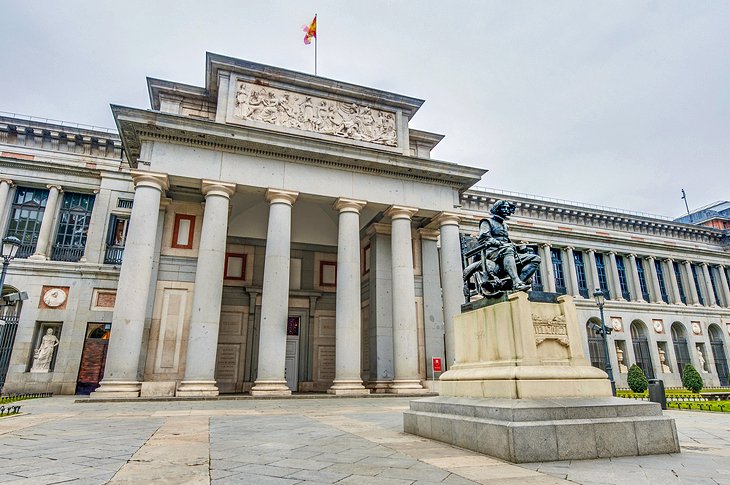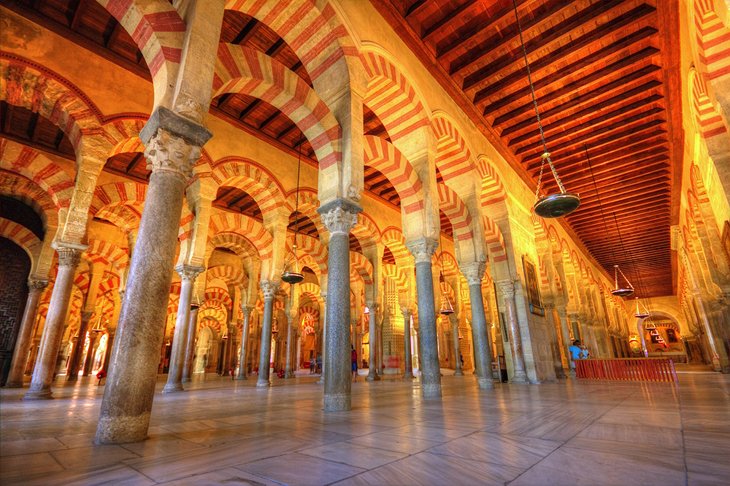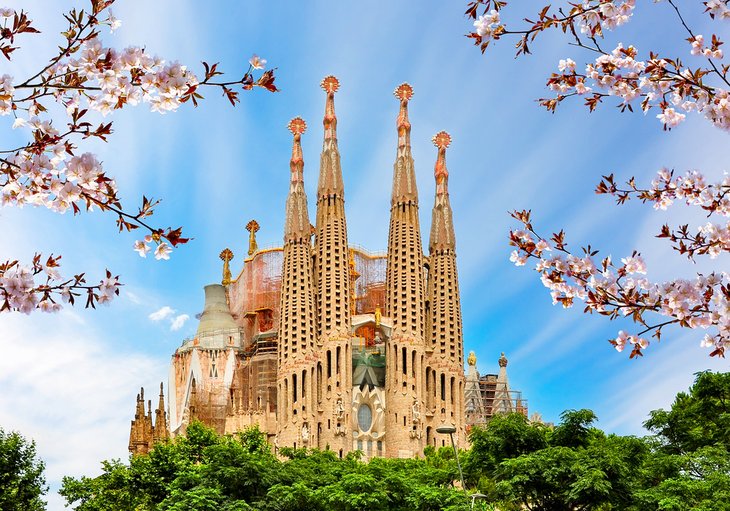
This grandiose palace is the Spanish version of Versailles, a royal court designed to impress. Rising above a steep slope overlooking the lush gardens, the palace is built entirely of granite and white Colmenar stone. The palace was commissioned by Philip V in the 18th century. The majestic Neoclassical facade features Ionic columns and Doric pilasters, based on drawings that the sculptor Bernini originally intended for the Louvre in Paris. The balustrade features statues of Spanish kings.
The most striking feature of the interior is the imposing staircase at the entrance hallway, with a fresco of The Triumph of Religion and the Church, that leads up to the main floor. The King Charles III apartments are among the beautiful rooms in the Royal Palace. A masterpiece of Rococo style, the Salon de Gasparini features graceful chinoiserie, an intricately patterned marble floor, and carefully matched silk wall hangings. The Salón del Trono (Throne Room) is adorned with frescoes by Tiepolo including The Greatness of the Spanish Monarchy, one of his finest works. Still used for State ceremonies, the Throne Room is clad in sumptuous red velvet and decorated with valuable tapestries, mirrors, furniture, and chandeliers. Throughout the palace masterpieces of art decorate the walls: paintings by Velázquez, Goya, Rubens, El Greco, and Caravaggio, and exquisite Flemish and French tapestries. History buffs will want to visit the palace's Royal Armory, which contains 3,000 exhibits dating back to the 16th century. Behind the palace, and a good place for quiet strolls, are the Sabatini Gardens, formal beds and hedges laid out in the geometric Neoclassical style, with fountains, statues, and a pool.
Address: Calle Bailén, Madrid





























